Well, the self-granted week off last Sunday was a good move, because the opposite of what I thought would happen, happened: I spent lots of time considering the subjects I write about, and took virtually no photographs. Given that we were in highly photogenic Sweden, and all I managed were lots of flowers around windows and several red barns, it came as quite a surprise to me.
We stayed in a small town about an hour from Stockholm, all roses and hollyhocks, painted houses, pot-hole free roads, bakeries and coffee shops, for a party on Saturday to celebrate Zoë and Tom’s first wedding anniversary. There were just eleven of us at the wedding on Gotland last July, and this time there was ten times the number, which meant a lot of Swedes speaking impeccable English. (Despite doing Ordel every day and sometimes even beating Tom and very occasionally Zoë, sadly I find I can’t make flowing conversation with just a handful of five-letter Swedish words which cover cinnamon, house, coffee breaks and lagom.) It was a beautiful day, we wore bright, summery clothes, ate strawberry cream cake, and cried at Tom and Zoë’s speeches. I took precisely two photos.
[Kersti with a breadbasket, 1907, painted on a door in the house]
Meanwhile, while enjoying yet another cardamom bun, walking by the lake, admiring wildflowers, seeing a moose at midnight (it didn’t mingle, as in the Woody Allen story, an all-time classic), driving through forest/lake/bridge/red barn landscapes on repeat, I was gathering ideas and thoughts, just when I’d expected my mind to be totally vacant.
[‘Suzanne and another’, 1901]
What really inspired me was the subject of Swedish domesticity, as seen through the prism of the Carl Larsson house, which of course should really be called the Carl and Karin Larsson house. I know I’ve written about it on the Persephone Post this week, but that was really only the beginning.
[‘Blomsterfönstret’ (‘The Flower Window’), 1894, the postcard with the knitting and geraniums that inspired me so much]
Someone asked me at the party how I knew about Carl Larsson. We’d gone to his house on the Wednesday, making the six-hour round trip in a day, something which won us quite a bit of kudos because so many of the Swedish contingent had never been even though it is relatively close, and despite the fact that what the Larssons created has permeated and influenced every aspect of Swedish interior design and domestic imagery. So even if they haven’t been to the tiny village of Sundborn, they all know of its importance in the national, collective consciousness.
[‘Lathörnet’ (‘The Lazy Corner’), 1894]
Meanwhile, I was trying to remember how I came to have postcards of his work at university. I gave up in the end, once I understood that part of his immense fame and reach are due to the the fact that his work was so widely reproduced in his lifetime and after. So it could even have been in Stockport that I discovered him - if so, I can understand why it made such an impact. There’s a section on ‘Stockholm not Stockport’ in The Gentle Art of Domesticity which was published in 2007, long before we had a Swedish daughter-in-law, in which I explain that I felt there had been a spelling mistake on my birth certificate and that after my first visit to Stockholm, I began to suspect I was actually Swedish. Maybe it was all meant to happen.
[‘Brita, en katt och en smörgås’ (‘Brita, a cat and a sandwich’), 1898]
So we drove to Sundborn, near Falun which was famous for copper mining in the C17 and the single largest source of Sweden’s immense wealth at that time. The mine is also the reason why most Swedish barns and other wooden buildings, including the Larssons’, are painted ‘Falu red’ (a colour which spread beyond Sweden and to N America). It is also responsible for falukorv, a deep red sausage which can be sampled at the busy restaurant next to Lilla Hyttnäs. Because the Larsson house is nothing if not popular. Stupidly, I hadn’t quite grasped this, and was shocked to see so many people at what I thought was going to be MY special place.
[‘The Bridge’, 1912]
But in the end it didn’t matter, because the house, garden, bridge, river, and even the neighbouring HEP station are all utterly magical and transcend the large numbers of tourists in cagoules. The minute you step into Carl and Karin’s world, it feels like walking into his paintings. No photography is allowed, but take my word for it, it’s exactly as he depicted it: the geraniums on the windowsills, inscriptions on walls, flowers everywhere, children’s faces on doors, rich colours, bright textiles, little visual jokes, a feeling of warmth, cosiness and happy, secure family life. Clearly it’s something of an idyll, but it’s impossible not to love it immediately, even if you’ve not been a fan for years.
[‘Suzanne on the Porch’, 1910]
When I read that Larsson worked as a photograph retoucher to support himself when a student, it didn’t surprise me. Nor the fact that he had a etching table in the studio. His paintings have beautiful, clear lines and a photographic level of detail, precision, and immediacy.
[‘Esbjorn doing his homework’, 1912]
With affection and humour, he records an ordinary/extraordinary family, special occasions, name days, Christmas, games, housework, homework, dressing up, and especially the joys of summer. Seeing the real thing does not diminish his work at all. On the contrary, it augments it.
[‘Lisbeth Reading’, 1904]
Being able to set the house in the context of the Swedish landscape and tradition also enhances the enjoyment. The Larssons’ use of greens and reds on panelling, chairs, plants, and flowers echoed the trees and barns we’d passed on our way there, and Swedish folk art inspired the furniture and walls with their painted decorative details and lettering. But Karin and Carl created a new, modern version of Swedish style, much brighter, less formal, more relaxed, which today has a direct link to IKEA. (IKEA acknowledges the debt.)
[Karin peeling apples, 1904]
It was very much a creative partnership, and I was also going to write about Karin today, but now I feel she deserves a newsletter of her own. I don’t want her to be a footnote, an add-on, here as she was for many years elsewhere. So that will be next week.
Ultimately, I have to say that if you ever get the chance, go to Sundborn. Yes, it’s quite a long way to travel, but if like me you feel you were born in the wrong place, then it’s unmissable. Plus, you can add in a chocolate ball and a swim (the house website helpfully suggests bathing places nearby).
It’s as if they knew I was coming home.
Glad söndag!




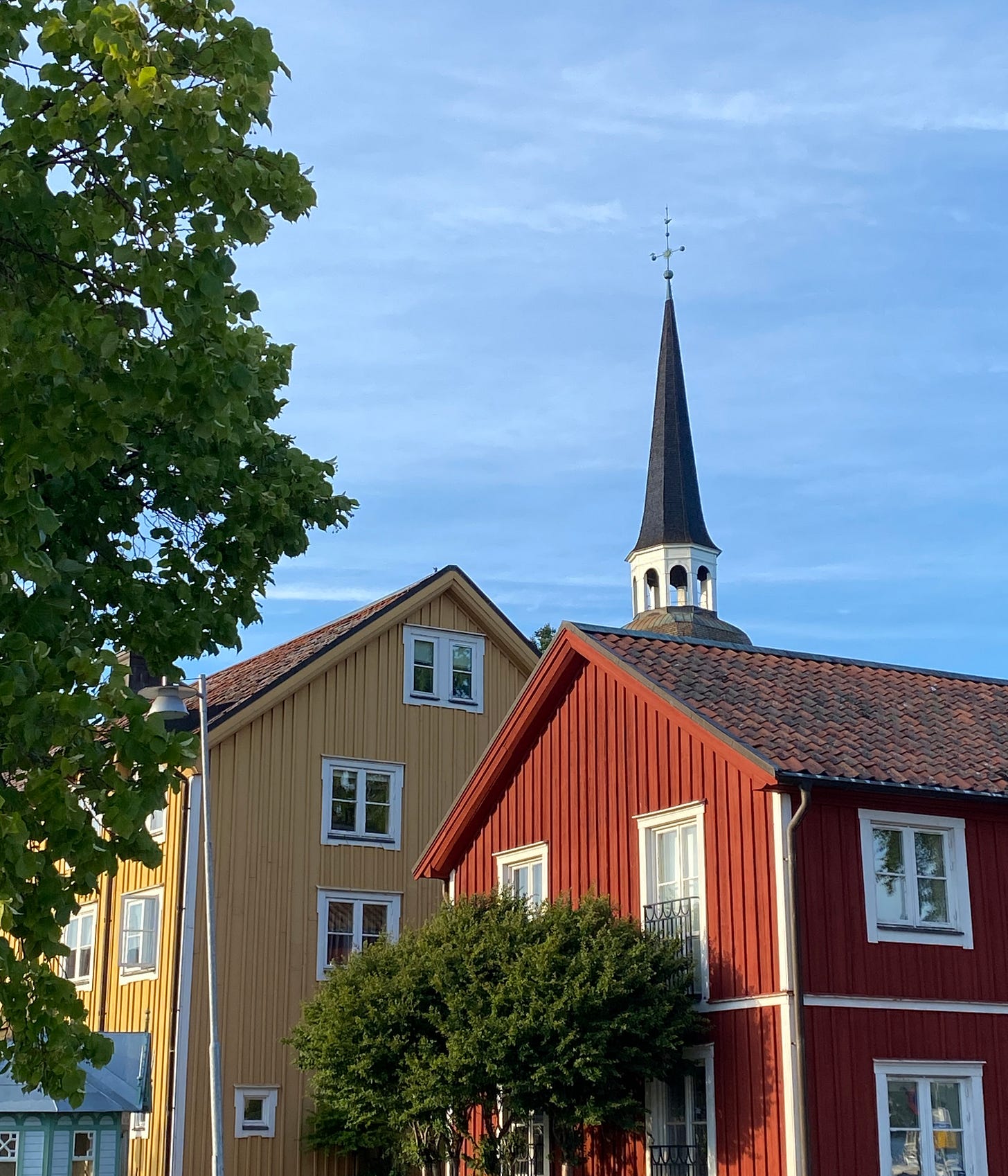
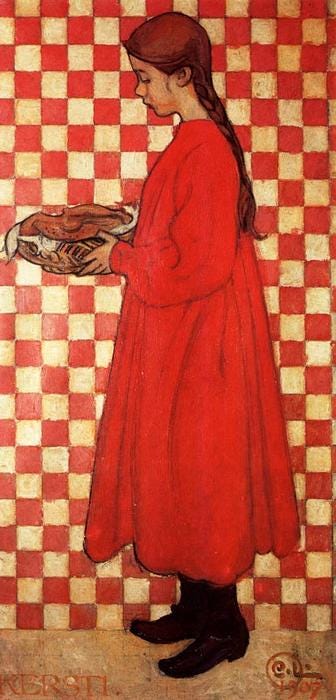
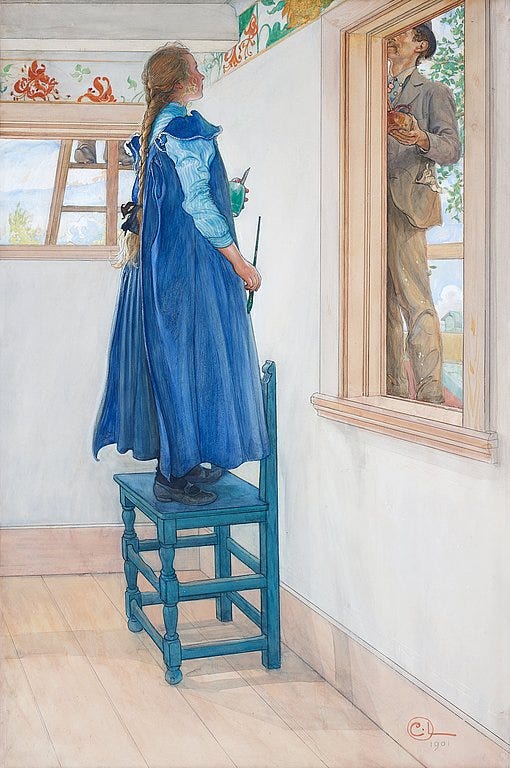
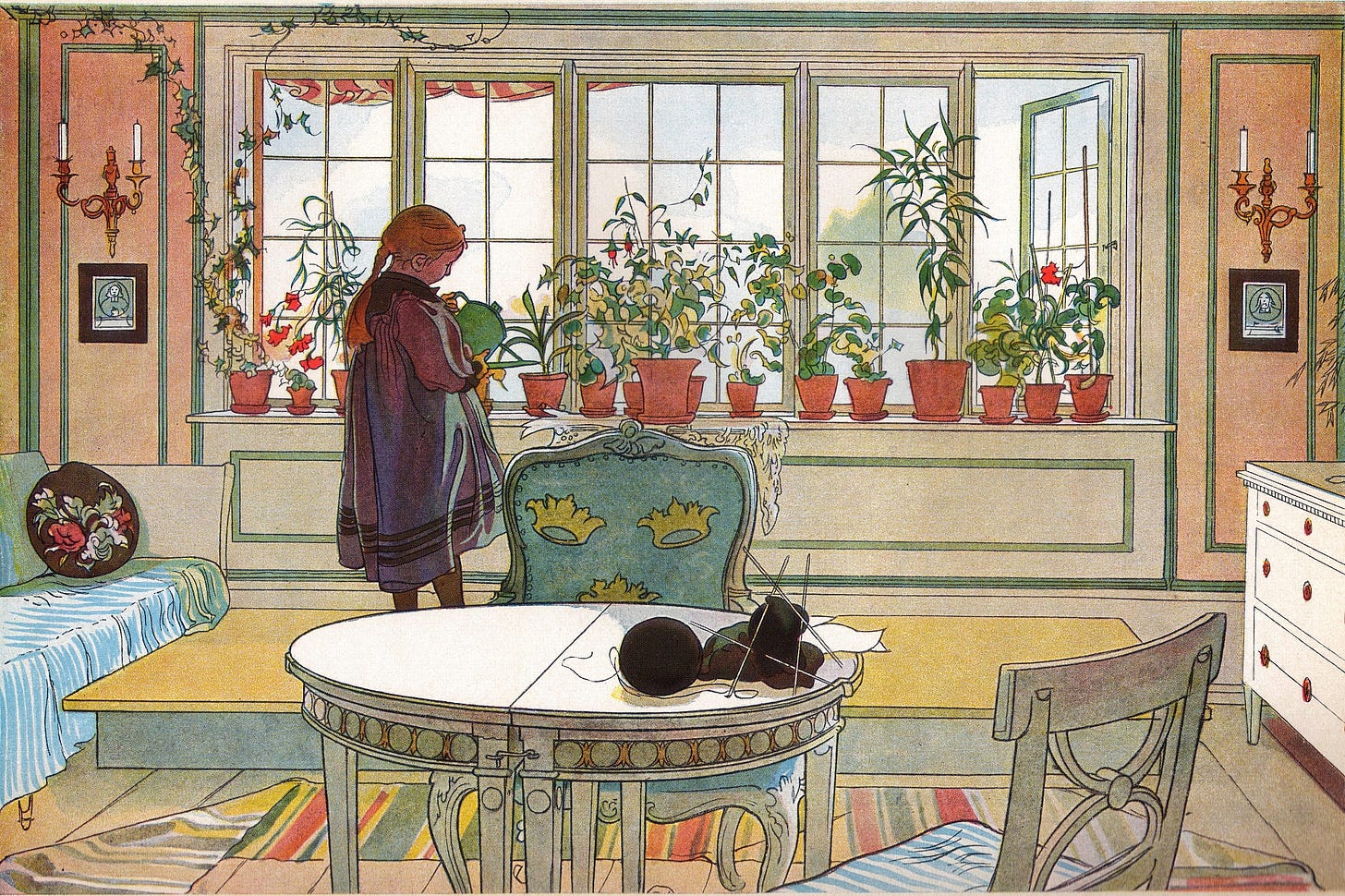
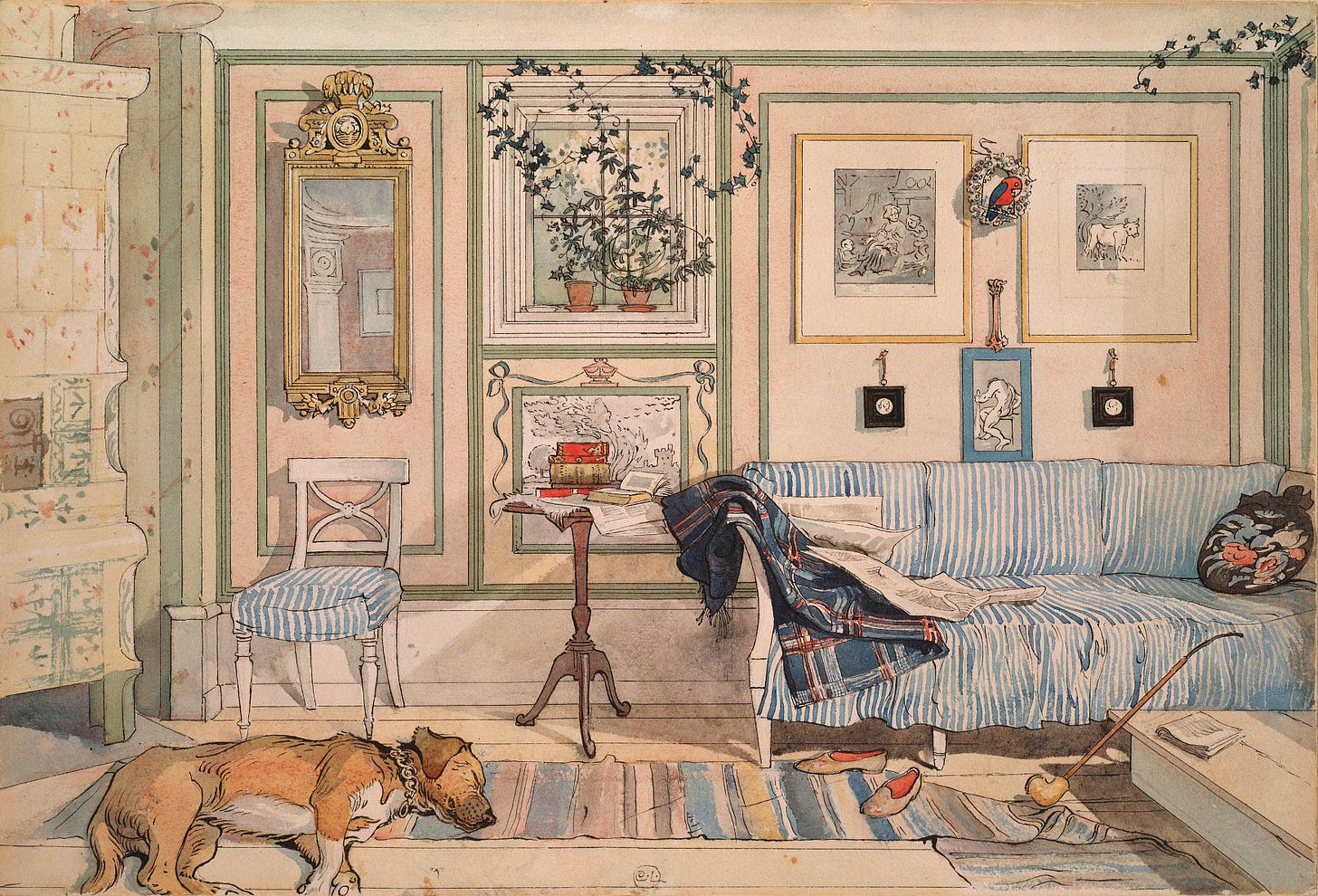
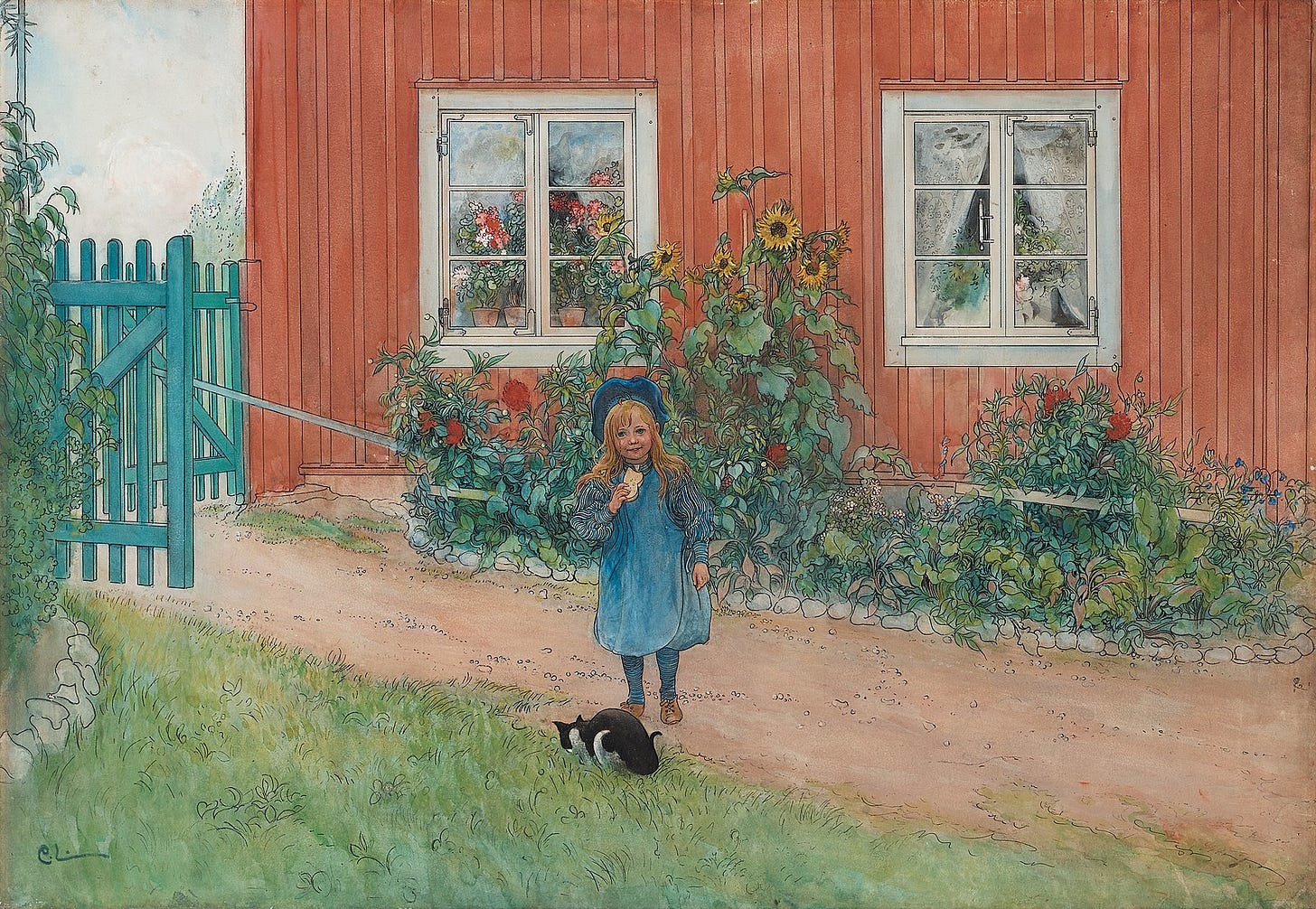
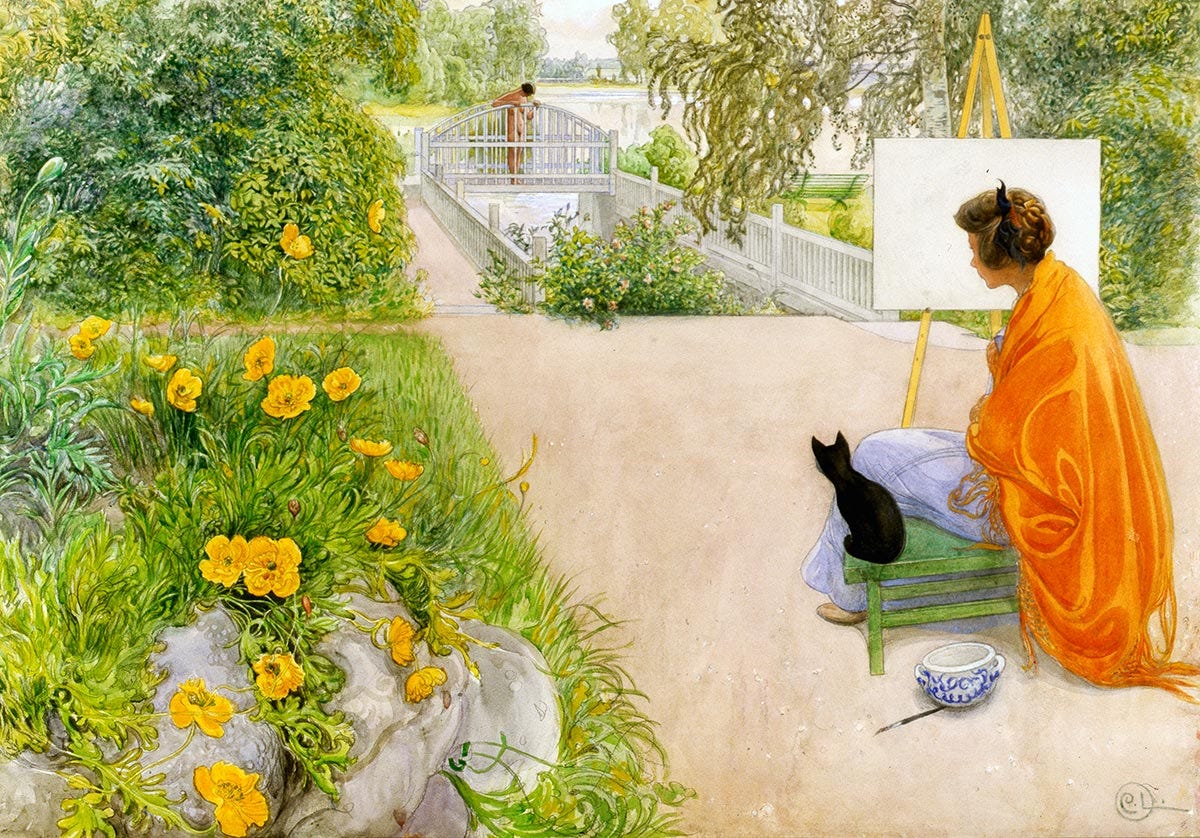
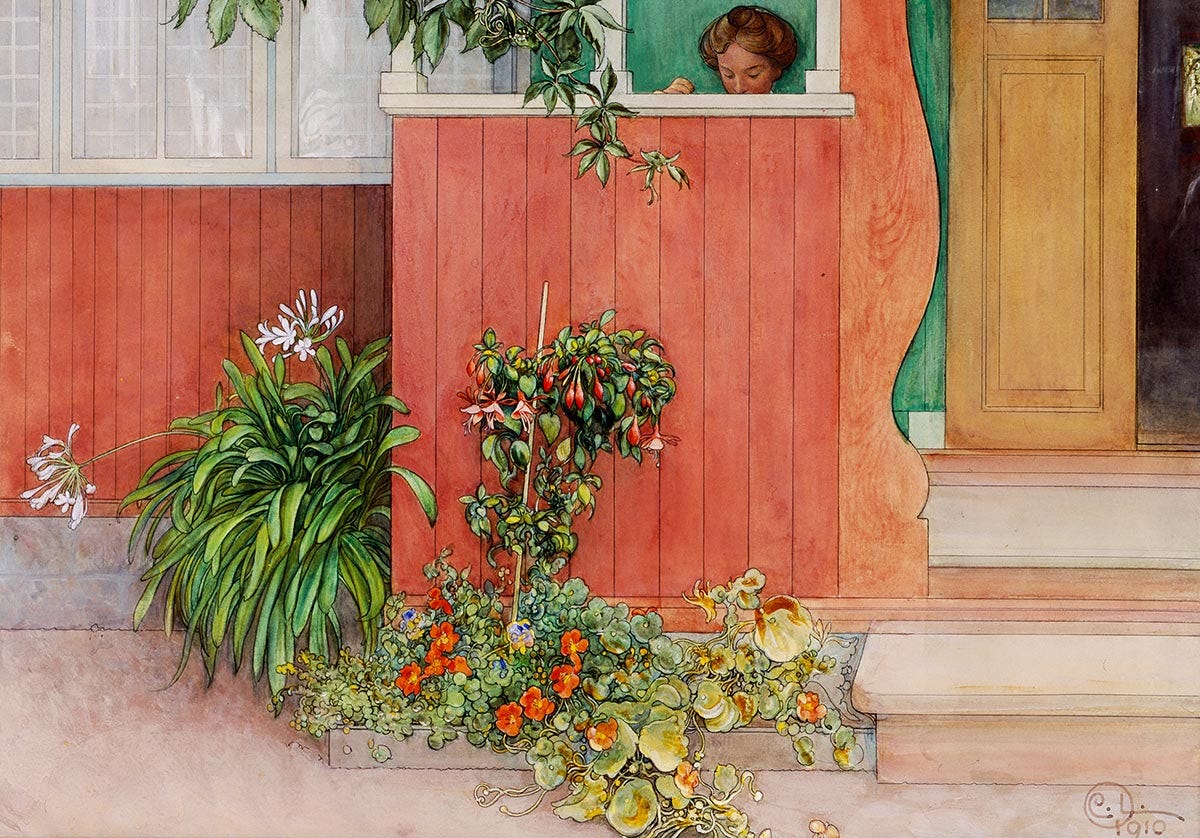
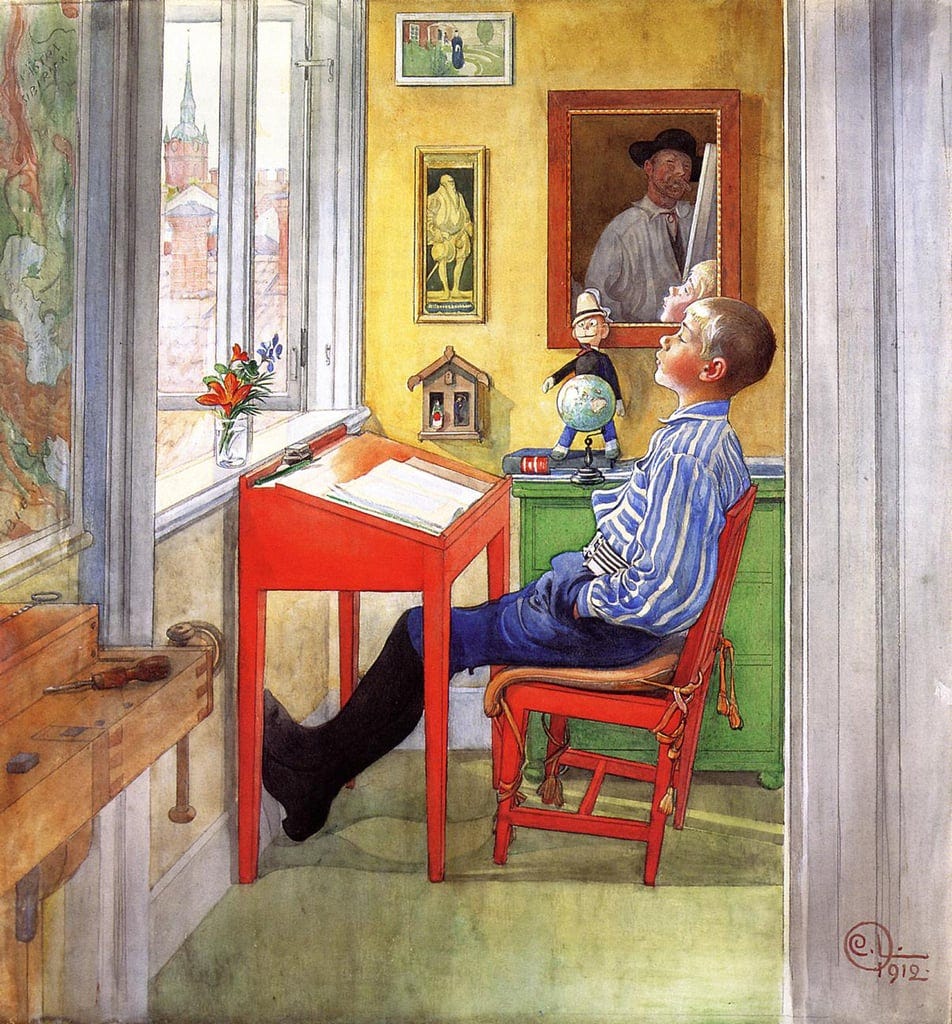
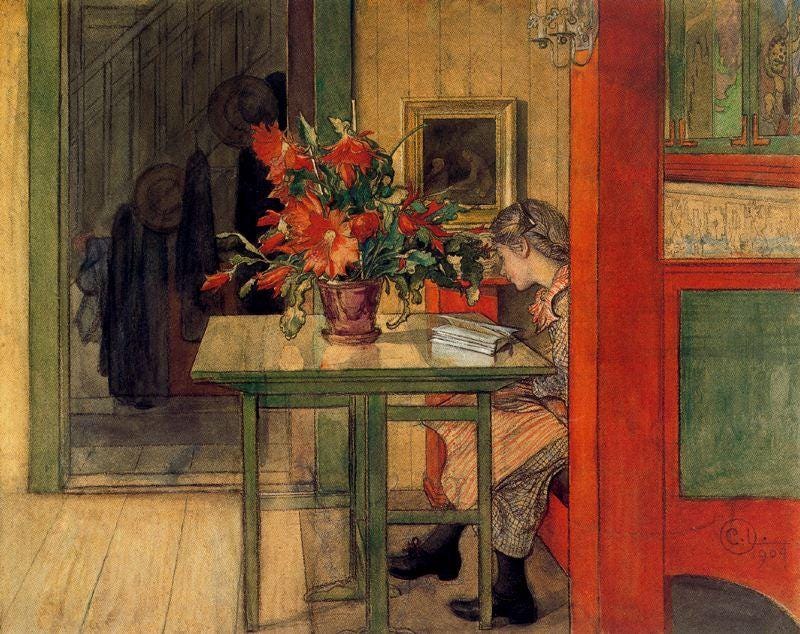
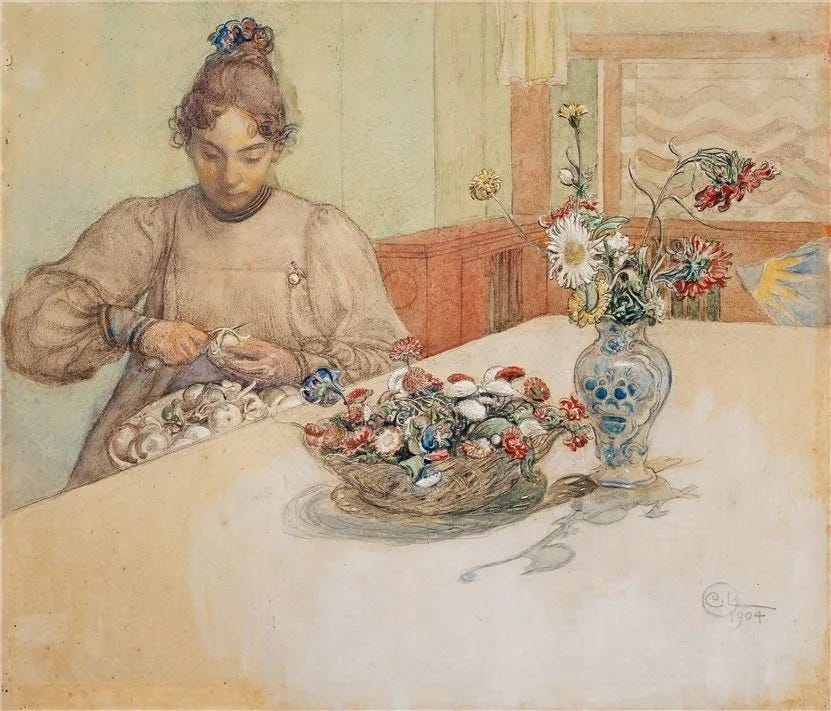
Oh wonderful Sweden! How lovely to see Falun-red houses (tho if I ever have a Swedish house I want a yellow one) and window boxes and Carl Larsson interiors on this gloomy, wet Scottish Sunday. Larsson's windowsills are perhaps my favourite thing of all his interiors, because they are so very Swedish. Swedes seem to be born with a blueprint for how to dress a windowsill, with pot plants and small candlestick lamps and if there's lace it looks just Swedish and not at all lace-curtainish. IKEA used to be much more Carl Larsson than it is now. We brought our first flatpack kitchen back by ferry from Gothenburg in 1986 in the back of our VW Polo, not long after we were married, and before IKEA reached the UK. When we declared it at customs at Newcastle the customs officer was so bemused that he waved us on through. I have a soft spot for Sweden because we got engaged in Stockholm. Planning an autumn visit this year, when my husband will speak Swedish and I will occasionally show my grasp of the language by making that sharp intake of breath that means "yes".
Lovely, inspirational post, as ever, thank you. I used to buy Larsson post cards from Ikea... don't think they sell them any more - nor do I go to Ikea so often as there isn't a store near me.